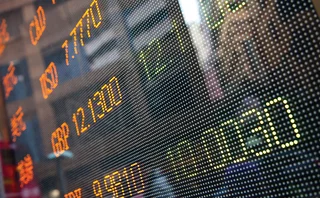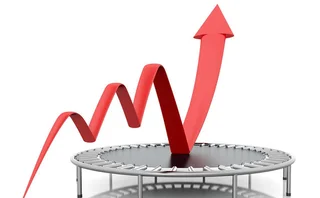
Hedge fund investors seek protection in macro uncertainty
Macro factors are driving hedge fund investors to reassess their positioning as central bankers signal an end to ultra-stimulative monetary policy in developed markets.

Hedge fund investors are positioning for a summer of macro uncertainties as central bankers signal an end to ultra-stimulative monetary policy in developed markets.
News of the US Federal Reserve’s intention to end its second round of quantitative easing (QE2) on schedule in June, confirmed by chairman Ben Bernanke, sparked a major sell-off in stocks, commodities and other risk assets.
Renewed concerns over sovereign debt problems in the European Union’s eurozone members, weaker than expected
Only users who have a paid subscription or are part of a corporate subscription are able to print or copy content.
To access these options, along with all other subscription benefits, please contact info@risk.net or view our subscription options here: http://subscriptions.risk.net/subscribe
You are currently unable to print this content. Please contact info@risk.net to find out more.
You are currently unable to copy this content. Please contact info@risk.net to find out more.
Copyright Infopro Digital Limited. All rights reserved.
As outlined in our terms and conditions, https://www.infopro-digital.com/terms-and-conditions/subscriptions/ (point 2.4), printing is limited to a single copy.
If you would like to purchase additional rights please email info@risk.net
Copyright Infopro Digital Limited. All rights reserved.
You may share this content using our article tools. As outlined in our terms and conditions, https://www.infopro-digital.com/terms-and-conditions/subscriptions/ (clause 2.4), an Authorised User may only make one copy of the materials for their own personal use. You must also comply with the restrictions in clause 2.5.
If you would like to purchase additional rights please email info@risk.net
More on Strategy
CTAs beat hedge fund rivals in 2014
Investors hope that CTAs’ fortunes have changed for good
Multi-strategy hedge fund assets surpass $400 billion
Investors flock back to strategy after years of trickling inflows
Hedge funds cautious on Argentina
How might hedge funds take advantage of opportunities in Argentina?
Hedge funds face growing risk, technology and data challenges
Sponsored feature: Broadridge Financial Solutions
A promising future
Sponsored statement: NYSE Liffe
Government bond traders see difficult markets heading into 2014
Your word is my bond
Hedge funds increase Asia quant investing risk capital by 50%
An improved Japan economy is ramping up quant investor activity across Asia
CTA trend followers suffer in market dominated by intervention
Return to normality








